
To create a fair and sustainable fashion industry while keeping the twin transition in mind, we must go beyond simply improving materials or reducing waste. What is needed is a systemic shift, a new way of thinking, designing and producing Fair Fashion. Thursday the 12th of June 2025, I went on an inspirational field trip to the TextielLab in Tilburg (the Netherlands). At the TextielLab, part of the TextielMuseum, this transformation is informally discussed and made tangible, one textile at a time. Let’s show a few interesting examples on how waste turns into products with a story and on how textiles can be smart as well.
One example of circular thinking in practice is the way yarn surpluses can be used. At the end of the weaving process warp threads are usually discarded, but in the TextielLab these leftovers are reused to create high-quality cloths. These textiles are not only functional but feature a unique TilburgsAans pattern which is inspired by a design using the shapes of old textile machine parts from Tilburg’s industrial heritage.

It is an example of giving a visual form to leftover material. Also, because the cloth is made from leftover warp threads each batch is small, turning this type of fabric into a scarce commodity. This limited availability and uniqueness of the product increased its appeal, turning it into a sought-after collector’s item (at least locally). Not just for its visual story, but for what it represents.

This shows that circular design does not have to compromise on desirability. On the contrary, it can create new forms of value, depending on its context. This approach turns textile waste into a medium for storytelling and reflection on the future of design and production.

In the TextielLab (part of the TextielMuseum), there is another compelling example for inspiration on the twin transition. When the Dutch Minister of Education, Culture and Science raised a practical issue about backlighting in her meeting room, the designers Nienke Bongers and Alissa van Asseldonk collaborated with the TextielLab to create a smart textile solution. The fabric is made of recycled fibers that offer strength, stiffness and transparency. In partnership with a technology company, they created a responsive system: a curtain that opens and closes responding to sunlight, much like a flower responding to its environment. The result was not just a shading system for the Dutch Minister, but a living material experience that unites aesthetics, sustainability and user needs. This project illustrates how textiles can move beyond fashion to become active, intelligent and environmentally conscious components in architecture and interior design. And let’s be honest, don’t you all wish that this unique smart textile was available on the market to add to your own home? I would like to add this stylish product to all my windows.

And finally, another step forward that is seen more often is in the fashion industry is transparency. At the TextielLab, increasing attention is given to the use of a product passport in the form of a QR code (figure 4). This digital tool provides detailed information about a textile's composition, origin, production techniques and care instructions.
Product passports make it possible to trace a textile's full lifecycle. And in the context of fair fashion, they are an interesting example to create producers accountability and enabling circular business models.
As part of the FAIR FASHION Project, we believe such tools should not be optional add-ons but integral parts of the design process.
From reused yarns to solar-sensitive curtains and digital traceability, the examples coming from the TextielLab point in the same direction. They call for a more integrated and reflective approach to textiles. They also highlight the importance of heritage, craft and the power (and need!) of interdisciplinary collaboration. Therefore, the TextielLab offers a space for designers, artists, students and researchers to experiment and work together to design and produce textile. It is a place where knowledge is shared, and innovation is grounded in real material experimentation.
If you became interested after reading this blog and you want to learn more about the TextielMuseum or the TextielLab, pay them a visit in Tilburg. At least look at their website: https://textielmuseum.nl/en
📌 Learn more on our website: www.fairfashionproject.eu
📷 Follow us on Instagram: @fairfashioneu
💼 Connect on LinkedIn: FAIR FASHION Project
By Saskia Stoker (Amsterdam University of Applied Sciences)